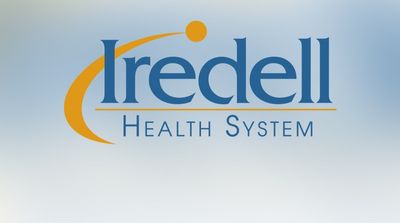Lung Cancer: Becoming Proactive for Early Detection & Prevention

Most of us are aware of the widespread prevalence of lung cancer, and that our behaviors strongly impact this type of cancer. But, even with well-known information on risk factors and new, advanced treatment options, lung cancer is still by far the leading cause of cancer death worldwide.
In the United States, 230,000 new cases of lung cancer are recorded per year, and according to the American Cancer Society, more people die of lung cancer than of colon, breast, and prostate cancers combined.
“We have known for at least 70 years that tobacco smoking is the most important risk for lung cancer, yet people continue to smoke. And most surprisingly, young people continue to begin smoking,” said Ruby Grimm, oncologist at Ruby Grimm Hematology and Oncology, part of the Iredell Physician Network.
Even though significant developments have been made in lung cancer treatment, lung cancer is still a very prevalent form of cancer in the United States.
World Lung Cancer Day is August 1. Having an awareness of your risks, reducing them, pursuing preventive screening options, and early detection can combat this prevalence and change your outcome.
“Survival after diagnosis of lung cancer is improving, thanks to earlier detection and better treatments, but clearly, prevention is the goal,” said Grimm.
Diving Deeper: Lung Cancer
Lung cancer occurs when abnormal cells in the lungs divide and multiply, eventually forming a tumor. The cancerous cells that make up this tumor can invade and destroy nearby healthy lung tissue.
Many years ago, lung cancer was considered a disease of men. According to Grimm, this was primarily true until many women began to smoke during World War II. Smoking during this time became an open expression of female independence and a desire for gender equality.
Since 1985, lung cancer deaths in women have continuously surpassed deaths caused by breast cancer.
“More than twice as many females die of lung cancer than breast cancer now. Occurrence is decreasing in men but increasing in women,” said Grimm.
Risk Factors
To lower your chances of developing lung cancer, awareness of risk factors and honest attempts to reduce them is crucial.
You probably already know that smoking is the greatest risk for lung cancer. According to Grimm, tobacco smoking is associated with 80-85% of lung cancers.
A person’s risk increases by the number of cigarettes per day and years of smoking. Doctor’s note this as “pack years.” For example, if an individual smokes two packs of cigarettes per day for 15 years, they have 30 pack years.
“Discontinuation of smoking at any time reduces risk but never equals the risk of a non-smoker,” said Grimm.
However, non-smokers can and still do develop lung cancer.
“Unfortunately, this is increasing in frequency. About 16% of lung cancer patients are non-smokers,” said Grimm.
Among the 16% of non-smokers, there is a higher percentage of women with lung cancer than men. In contrast to the 9% of lung cancer cases in non-smoking men, approximately 19% of non-smoking women have lung cancer.
Risk factors contributing to lung cancer in non-smokers may include exposure to secondhand smoke, asbestos, radon, or industrial metals such as nickel, cadmium, and arsenic.
Symptoms & Detection
After assessing and reducing your risk factors, early detection of lung cancer is essential in improving survival.
“Lung cancer may be recognized as a result of symptoms or found incidentally when being evaluated for other health problems,” said Grimm.
According to Grimm, common symptoms of lung cancer include coughing, spitting up blood, shortness of breath, repeated chest infections, chest pain, and hoarseness, among others.
To be proactive in lung cancer detection and prevention, you may want to begin screening.
Low-dose chest CT scans can detect lung cancer early, before symptoms appear. These scans have been approved for Medicare and other insurance reimbursement for people age 50-80 with a 20 pack-per-year history of smoking, those who currently smoke, and those who have smoked in the last 15 years.
Treatment
A lung cancer diagnosis can be scary; however, several treatment options are available, and many new treatments are becoming possible with advancements in knowledge and technology.
When diagnosed with lung cancer, treatment can include surgery, radiation or medical management with chemotherapy, immunotherapy, molecularly targeted therapy, and symptom management.
“New and good things are happening in the treatment of lung cancer — things that are leading to better outcomes and fewer unpleasant side effects,” said Grimm.
According to Grimm, these new advancements are largely due to the recognition of the molecular features of tumors. This allows therapy to be targeted to a specific molecular process.
Molecular testing of a tumor can identify a “driver mutation,” which is a change in a cell that initiates the process of becoming cancerous. In order to live and grow, a cell must receive a specific signal from a driver. You can think of this driver signal as an “on switch” for the cell. If a cell is cancerous, targeted treatments can turn off the switch, or the signal, and lead to cancer cell death.
The recognition of the molecular features of tumors has also advanced immunotherapy strategies. Immunotherapy can help the body’s immune system to stop or slow the growth of cancer cells. Specific treatment drugs can turn off the body’s immune response, allowing for an attack on cancer cells.
“While advances in lung cancer management are encouraging, the need for prevention and early detection remains paramount,” said Grimm.
About Iredell Health System
Iredell Health System includes Iredell Memorial Hospital; Iredell Mooresville; Iredell Home Health; Iredell Wound Care & Hyperbaric Center; Community and Corporate Wellness; Occupational Medicine; the Iredell Physician Network and more. Iredell Memorial Hospital is the largest and only nonprofit hospital in Iredell County. The comprehensive healthcare facility has 247 beds; more than 1,700 employees; and has 260 physicians representing various specialties. Centers of excellence include Women’s and Children’s; Cardiovascular; Cancer; Surgical Services and Wellness & Prevention. The Health System’s newest campus, Iredell Mooresville, is home to the area’s only 24-hour urgent care facility, as well as an ambulatory surgery center, imaging center, rehabilitation services, and physician practices. The mission of Iredell Health System is to inspire wellbeing. For a comprehensive list of services and programs, visit www.iredellhealth.org.































